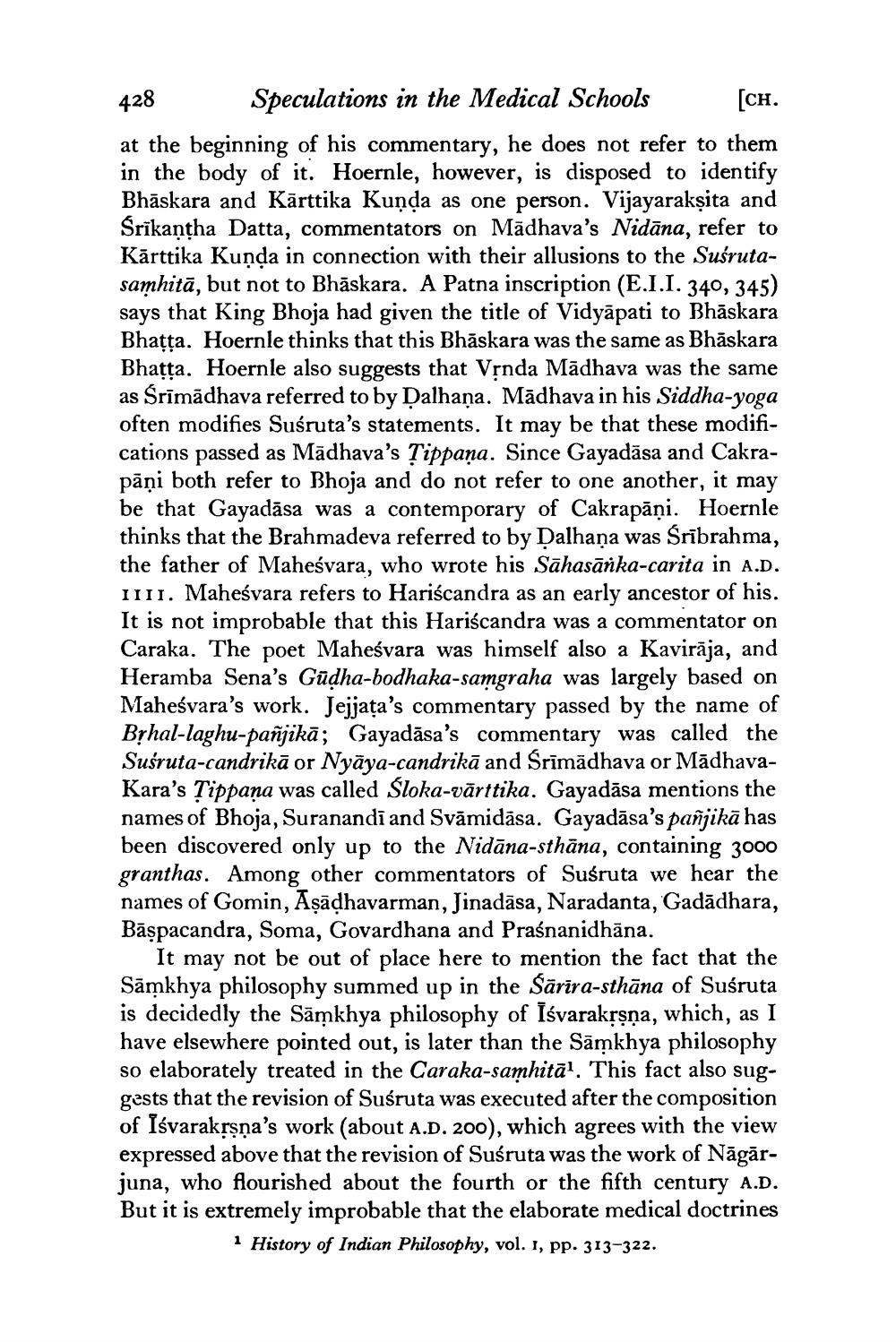________________
428
Speculations in the Medical Schools [CH. at the beginning of his commentary, he does not refer to them in the body of it. Hoernle, however, is disposed to identify Bhāskara and Kārttika Kunda as one person. Vijayarakṣita and Srikantha Datta, commentators on Mädhava's Nidāna, refer to Kārttika Kunda in connection with their allusions to the Suśrutasamhitā, but not to Bhāskara. A Patna inscription (E.I.I. 340, 345) says that King Bhoja had given the title of Vidyāpati to Bhāskara Bhațța. Hoernle thinks that this Bhāskara was the same as Bhāskara Bhatta. Hoernle also suggests that Vịnda Madhava was the same as Srīmādhava referred to by Dalhana. Mādhava in his Siddha-yoga often modifies Suśruta's statements. It may be that these modifications passed as Mādhava's sippana. Since Gayadāsa and Cakrapāņi both refer to Bhoja and do not refer to one another, it may be that Gayadāsa was a contemporary of Cakrapāņi. Hoernle thinks that the Brahmadeva referred to by Dalhaņa was Śrībrahma, the father of Maheśvara, who wrote his Sāhasānka-carita in A.D. II. Maheśvara refers to Hariscandra as an early ancestor of his. It is not improbable that this Hariscandra was a commentator on Caraka. The poet Maheśvara was himself also a Kavirāja, and Heramba Sena's Gūdha-bodhaka-samgraha was largely based on Maheśvara's work. Jejjața's commentary passed by the name of Brhal-laghu-pañjikā; Gayadāsa's commentary was called the Sušruta-candrikā or Nyāya-candrikā and Srīmādhava or MādhavaKara's Tippaña was called Sloka-vārttika. Gayadāsa mentions the names of Bhoja, Suranandi and Svāmidāsa. Gayadāsa's pañjikā has been discovered only up to the Nidāna-sthāna, containing 3000 granthas. Among other commentators of Suśruta we hear the names of Gomin, Aşādhavarman, Jinadāsa, Naradanta, Gadādhara, Bāspacandra, Soma, Govardhana and Praśnanidhāna.
It may not be out of place here to mention the fact that the Sāmkhya philosophy summed up in the Sārīra-sthāna of Suśruta is decidedly the Sāmkhya philosophy of Iśvarakrsna, which, as I have elsewhere pointed out, is later than the Sāmkhya philosophy so elaborately treated in the Caraka-samhitāl. This fact also suggests that the revision of Suśruta was executed after the composition of Isvarakrsna's work (about A.D. 200), which agrees with the view expressed above that the revision of Suśruta was the work of Nāgārjuna, who flourished about the fourth or the fifth century A.D. But it is extremely improbable that the elaborate medical doctrines
1 History of Indian Philosophy, vol. I, pp. 313-322.




